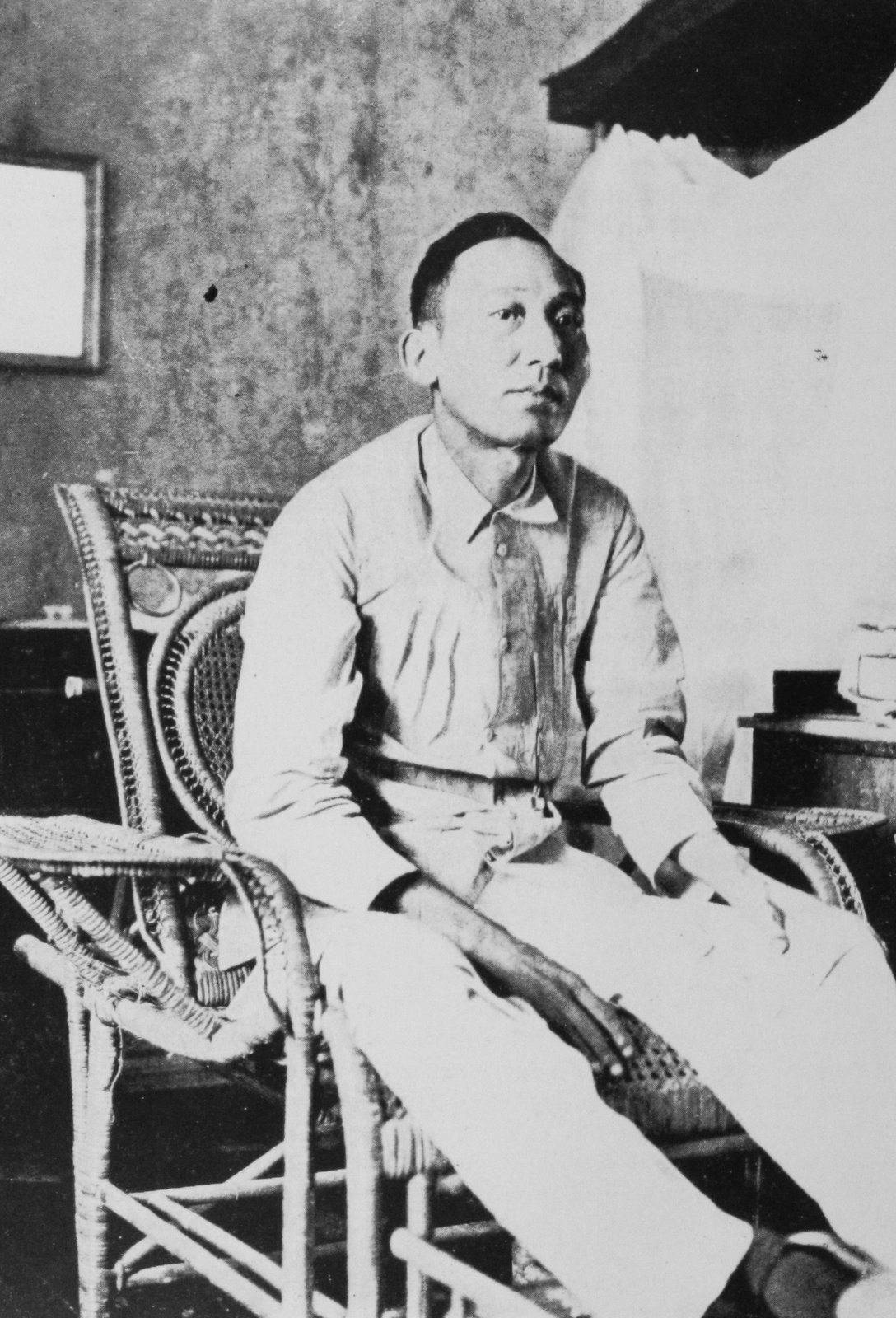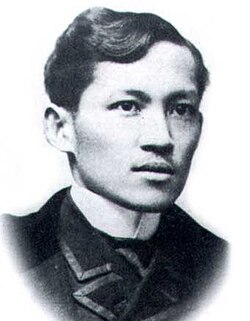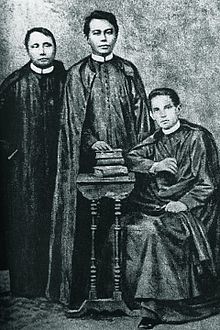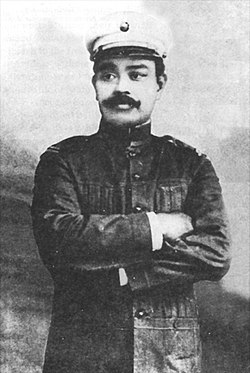PESO EDITION
1 Peso. 1949 - 1968
Front : Apolinario Mabini
Back : Barasoain Church
Apolinario Mabini Maranan (July 23, 1864 — May 13, 1903) was a Filipino political philosopher and revolutionary who wrote a constitutional plan for the first Philippine republic of 1899-1901, and served as its first prime minister in 1899. In Philippine history texts, he is often referred to as "the Sublime Paralytic", and as "the Brains of the Revolution." To his enemies and detractors, he is referred to as the "Dark Chamber of the President."

Barasoain Church (also known as Our Lady of Mt. Carmel Parish) is a Roman Catholic church built in 1630 in Malolos City, Bulacan. Having earned the title as the Cradle of Democracy in the East, the most important religious building in the Philippines,and the site of the First Philippine Republic, the Church is proverbial for its historical importance among Filipinos.
Founded by Augustinian Missionaries in 1859, the church is also renowned for its architectural design and internal adornments. The original church was burned during the outbreak of the Philippine Revolution however, it was renovated. It is about 42 kilometers away from Manila.
The church recorded some of the important events occurred in the country. While it has been a temporary residence of General Aguinaldo, three major events in Philippine History happened in this church: the convening of the First Philippine Congress (September 15, 1898), the drafting of the Malolos Constitution (September 29, 1898 to January 21, 1899), and the inauguration of the First Philippine Republic (January 23, 1899). By Presidential Decree No. 260 , the church was proclaimed as a National Shrine by President Ferdinand Marcos on August 1, 1973. Unusual for newly elected presidents in the Philippines, the church has been a venue in an inaugural affairs. General Emilio Aguinaldo and former president Joseph Estrada were the only two who have been inaugurated in the place.
Founded by Augustinian Missionaries in 1859, the church is also renowned for its architectural design and internal adornments. The original church was burned during the outbreak of the Philippine Revolution however, it was renovated. It is about 42 kilometers away from Manila.
The church recorded some of the important events occurred in the country. While it has been a temporary residence of General Aguinaldo, three major events in Philippine History happened in this church: the convening of the First Philippine Congress (September 15, 1898), the drafting of the Malolos Constitution (September 29, 1898 to January 21, 1899), and the inauguration of the First Philippine Republic (January 23, 1899). By Presidential Decree No. 260 , the church was proclaimed as a National Shrine by President Ferdinand Marcos on August 1, 1973. Unusual for newly elected presidents in the Philippines, the church has been a venue in an inaugural affairs. General Emilio Aguinaldo and former president Joseph Estrada were the only two who have been inaugurated in the place.
2 Peso. 1949 - 1968
Front : Dr. Jose Rizal
Back : Landing of Magellan in The Philippines
José Protacio Rizal Mercado Alonso Realonda (June 19, 1861 – December 30, 1896), was a Filipino polymath, patriot and the most prominent advocate for reform in the Philippines during the Spanish colonial era. He is regarded as the foremost Filipino patriot and is listed as one of the national heroes of the Philippines by National Heroes Committee. His execution by the Spanish in 1896, a date marked annually as Rizal Day, a Philippine national holiday, was one of the causes of the Philippine Revolution.
Rizal was born to a rich family in Calamba, Laguna and was the seventh of eleven children. He attended the Ateneo Municipal de Manila, earning a Bachelor of Arts, and enrolled in medicine at the University of Santo Tomas. He continued his studies at the Universidad Central de Madrid in Madrid, Spain, earning the degree of Licentiate in Medicine. He also attended the University of Paris and earned a second doctorate at the University of Heidelberg.
Rizal was a polyglot conversant in twenty-two languages.He was a prolific poet, essayist, diarist, correspondent, and novelist whose most famous works were his two novels, Noli me Tangere and El filibusterismo. These social commentaries on Spanish rule formed the nucleus of literature that inspired peaceful reformists and armed revolutionaries alike.
As a political figure, José Rizal was the founder of La Liga Filipina, a civic organization that subsequently gave birth to the Katipunan led by Andrés Bonifacio and Emilio Aguinaldo. He was a proponent of achieving Philippine self-government peacefully through institutional reform rather than through violent revolution, although he would support "violent means" as a last resort. Rizal believed that the only justification for national liberation and self-government is the restoration of the dignity of the people, saying "Why independence, if the slaves of today will be the tyrants of tomorrow?" The general consensus among Rizal scholars is that his execution by the Spanish helped to bring about the Philippine Revolution
Rizal was born to a rich family in Calamba, Laguna and was the seventh of eleven children. He attended the Ateneo Municipal de Manila, earning a Bachelor of Arts, and enrolled in medicine at the University of Santo Tomas. He continued his studies at the Universidad Central de Madrid in Madrid, Spain, earning the degree of Licentiate in Medicine. He also attended the University of Paris and earned a second doctorate at the University of Heidelberg.
Rizal was a polyglot conversant in twenty-two languages.He was a prolific poet, essayist, diarist, correspondent, and novelist whose most famous works were his two novels, Noli me Tangere and El filibusterismo. These social commentaries on Spanish rule formed the nucleus of literature that inspired peaceful reformists and armed revolutionaries alike.
As a political figure, José Rizal was the founder of La Liga Filipina, a civic organization that subsequently gave birth to the Katipunan led by Andrés Bonifacio and Emilio Aguinaldo. He was a proponent of achieving Philippine self-government peacefully through institutional reform rather than through violent revolution, although he would support "violent means" as a last resort. Rizal believed that the only justification for national liberation and self-government is the restoration of the dignity of the people, saying "Why independence, if the slaves of today will be the tyrants of tomorrow?" The general consensus among Rizal scholars is that his execution by the Spanish helped to bring about the Philippine Revolution
Landing of Magellan in The Philippines
Ferdinand Magellan
Ferdinand Magellan (Portuguese: Fernão de Magalhães, IPA: [fɨɾˈnɐ̃w ðɨ mɐɣɐˈʎɐ̃jʃ]; Spanish: Fernando de Magallanes, IPA: [ferˈnando ðe maɣaˈʎanes]; c. 1480 – 27 April 1521) was a Portuguese explorer. He was born in Sabrosa, in northern Portugal, and served King Charles I of Spain in search of a westward route to the "Spice Islands" (modern Maluku Islands in Indonesia).
Magellan's expedition of 1519–1522 became the first expedition to sail from the Atlantic Ocean into the Pacific Ocean (then named "peaceful sea" by Magellan; the passage being made via the Strait of Magellan), and the first to cross the Pacific. It also completed the first circumnavigation of the Earth, although Magellan himself did not complete the entire voyage, being killed during the Battle of Mactan in the Philippines.
Magellan's expedition of 1519–1522 became the first expedition to sail from the Atlantic Ocean into the Pacific Ocean (then named "peaceful sea" by Magellan; the passage being made via the Strait of Magellan), and the first to cross the Pacific. It also completed the first circumnavigation of the Earth, although Magellan himself did not complete the entire voyage, being killed during the Battle of Mactan in the Philippines.
5 Peso. 1949 - 1968
Front : Marcelo H. Del Pilar - Graciano Lopez Jaina
Back : La Solidaridad
Marcelo Hilario del Pilar Gatmaitán (August 30, 1850 – July 4, 1896), better known by his nom-de-plume Plaridel, was a celebrated figure in the Philippine Revolution and a leading propagandist for reforms in the Philippines.
A master polemicist in both the Tagalog and Spanish languages, he helped the Propaganda Movement through his speeches and liberal writings on the plight of the Filipinos as a result of the abuses of the Spanish friars in the country. He was the editor and co-publisher of La Solidaridad (The Solidarity)
A master polemicist in both the Tagalog and Spanish languages, he helped the Propaganda Movement through his speeches and liberal writings on the plight of the Filipinos as a result of the abuses of the Spanish friars in the country. He was the editor and co-publisher of La Solidaridad (The Solidarity)

Graciano López Jaena (December 18, 1856-January 20, 1896) was a Filipino journalist, orator, and revolutionary from Iloilo, well known for his written work, La Solidaridad.
Philippine historians regard López Jaena, along with Marcelo H. del Pilar and José Rizal, as the triumvirate of Filipino propagandists. Of these three ilustrados, López Jaena was the first to arrive and may have founded the genesis of the Propaganda Movement.
Philippine historians regard López Jaena, along with Marcelo H. del Pilar and José Rizal, as the triumvirate of Filipino propagandists. Of these three ilustrados, López Jaena was the first to arrive and may have founded the genesis of the Propaganda Movement.
La Solidaridad (English: The Solidarity) was an organization created in Spain on December 13, 1888. Composed of Filipino liberals exiled in 1872 and students attending Europe's universities, the organization aimed to increase Spanish awareness of the needs of its colony, the Philippines, and to propagate a closer relationship between the colony and Spain.
Headed by José Rizal's cousin, Galicano Apacible, it also issued a newspaper of the same name which was published in Barcelona, Spain in 1889. It was edited by Graciano López Jaena and later on by Marcelo H. del Pilar.The newspaper published not only articles and essays about the economic, cultural, political, and social conditions of the country, but also current news, both local and foreign, and speeches of prominent Spanish leaders about the Philippines.
Headed by José Rizal's cousin, Galicano Apacible, it also issued a newspaper of the same name which was published in Barcelona, Spain in 1889. It was edited by Graciano López Jaena and later on by Marcelo H. del Pilar.The newspaper published not only articles and essays about the economic, cultural, political, and social conditions of the country, but also current news, both local and foreign, and speeches of prominent Spanish leaders about the Philippines.
10 Peso. 1949 - 1968.
Front : Fathers Mariano Gómez, José Burgos and Fray Jacinto Zamora
Back : Urdaneta and legaspi Monument
Fathers Mariano Gómez, José Burgos and Fray Jacinto Zamora
José Apolonio Burgos García was a Filipino mestizo secular priest, accused of mutiny by the Spanish colonial authorities in the Philippines in the 19th century. He was placed in a mock trial and summarily executed in Manila along with two other clergymen. They were Mariano Gómez and Fray Jacinto Zamora

Urdaneta and legaspi Monument
20 peso. 1949 - 1968.
Front : Andres Bonifacio - Emilio Jacinto
Back : The Kartilya ng Katipunan

Andrés Bonifacio de Castro (30 November 1863 – 10 May 1897) was a Filipino nationalist and revolutionary. He is often called "the great plebeian," "father of the Philippine Revolution," and "father of the Katipunan." He was a founder and later Supremo ("supreme leader") of the Katipunan movement which sought the independence of the Philippines from Spanish colonial rule and started the Philippine Revolution. He is considered a de facto national hero of the Philippines,and is also considered by some Filipino historians to be the first President, but he is not officially recognized as such.

Emilio Jacinto
Born in Manila, Jacinto was proficient both in Spanish and Tagalog, but preferred to speak in Spanish. He attended San Juan de Letran College, and later transferred to the University of Santo Tomas to study law. He had Manuel Quezon, Sergio Osmena and Juan Sumulong as classmates. He did not finish college and, at the age of 20, joined the secret society called Katipunan. He became the advisor on fiscal matters and secretary to Andrés Bonifacio. He was later known as Utak ng Katipunan..
Jacinto also wrote for the Katipunan newspaper called Kalayaan. He wrote in the newspaper under the pen name Dimasilaw, and used the alias Pingkian in the Katipunan. Jacinto was the author of the Kartilya ng Katipunan as well.
After Bonifacio's death, Jacinto pressed on the Katipunan's struggle. Like general Mariano Álvarez, he refused to join the forces of general Emilio Aguinaldo, the leader of the Katipunan's Magdalo faction. He contracted malaria and died in Magdalena, Laguna, at the age of 23. His remains were later transferred to the Manila North Cemetery.
Jacinto also wrote for the Katipunan newspaper called Kalayaan. He wrote in the newspaper under the pen name Dimasilaw, and used the alias Pingkian in the Katipunan. Jacinto was the author of the Kartilya ng Katipunan as well.
After Bonifacio's death, Jacinto pressed on the Katipunan's struggle. Like general Mariano Álvarez, he refused to join the forces of general Emilio Aguinaldo, the leader of the Katipunan's Magdalo faction. He contracted malaria and died in Magdalena, Laguna, at the age of 23. His remains were later transferred to the Manila North Cemetery.

The Kartilya ng Katipunan (English: Primer of the Katipunan) served as the guidebook for new members of the organization, which laid out the group's rules and principles. The first edition of the Kartilya was written by Andres Bonifacio, Emilio Jacinto will later pen a revised Decalogue.
50 Peso. 1949 - 1968.
Front : Antonio Luna
Back : The Blood Compact Between Sikatuna and Legaspi
Antonio Luna de San Pedro Novicio-Ancheta (October 29, 1866 - June 5, 1899) was a Filipino pharmacist and general who fought in the Philippine-American War. He was also the founder of the Philippines's first military academy.

The Blood Compact Between Sikatuna and Legaspi
Blood compact (in Spanish: Pacto de sangre) was a ritual in the Philippines where tribes would cut their wrist and pour their blood into a cup filled with liquid and drink each other's blood as part of the tribal tradition to seal a friendship, a pact or treaty, or to validate an agreement. The cup, usually filled with wine is mixed with blood and drank by both parties entering a mutual consent.
An example of the blood compact was called Sandugo, which took place in the island of Bohol in the 16th century. The ritual was made between the Spanish explorer Miguel López de Legazpi and Datu Sikatuna the chieftain of Bohol. A blood compact was also made between the Portuguese explorer Ferdinand Magellan and Rajah Humabon the chieftain of Cebu.
A similar ritual was done by the members of the KKK (Kataastaasan, Kagalang-galangang Katipunan). Though they didn't drink it, they signed their membership with their own blood.
An example of the blood compact was called Sandugo, which took place in the island of Bohol in the 16th century. The ritual was made between the Spanish explorer Miguel López de Legazpi and Datu Sikatuna the chieftain of Bohol. A blood compact was also made between the Portuguese explorer Ferdinand Magellan and Rajah Humabon the chieftain of Cebu.
A similar ritual was done by the members of the KKK (Kataastaasan, Kagalang-galangang Katipunan). Though they didn't drink it, they signed their membership with their own blood.
100 Peso. 1949 - 1968.
Front : Tandang Sora
Back : The Regimental Flags and The Veterans
Melchora Aquino de Ramos (January 6, 1812 – March 2, 1919) was a Filipina revolutionary who became known as "Tandang Sora" in the history of the Philippines because of her age when the Philippine Revolution broke out in 1896 (she was already 84 at the time). She gained the titles Grand Woman of the Revolution and the Mother of Balintawak for her heroic contributions to Philippine history.
In her native town, Tandang Sora operated a store, which became a refuge for the sick and wounded revolutionaries. She fed, gave medical attention to and encouraged the revolutionaries with motherly advice and prayers. Secret meetings of the Katipuneros (revolutionaries) were also held at her house. Thus she earned the names "Grand Woman of the revolution", "Mother of Balintawak", "Mother of the Katipunan", "Mother of the Philippine Revolution", and Tandang Sora (Tandang is derived from the Tagalog word matandâ, which means old). She and her son, Juan Ramos, were present in the Cry of Balintawak and were a witnesses to the tearing up of the cedulas. When the Spaniards learned about her activities and her knowledge to the whereabouts of the Katipuneros, she was interrogated but she refused to divulge any information. She was then arrested by the guardia civil and was deported to Guam, Mariana Islands.
After the United States took control of the Philippines in 1898, Tandang Sora, like other exiles, returned to Philippines until her death on March 2, 1919, at the age of 107. Her remains lie in her own backyard (now as Himlayang Pilipino Memorial Park, Quezon City).
After the United States took control of the Philippines in 1898, Tandang Sora, like other exiles, returned to Philippines until her death on March 2, 1919, at the age of 107. Her remains lie in her own backyard (now as Himlayang Pilipino Memorial Park, Quezon City).
200 Peso. 1949 - 1968.
Front : Manuel Quezon
Back : Legislative Building

Manuel Luis Quezón Molina (August 19, 1878 – August 1, 1944) served as president of the Commonwealth of the Philippines from 1935 to 1944. He was the first Filipino to head a government of the Philippines (as opposed to other historical states). Quezón is considered by most Filipinos to have been the second president of the Philippines, after Emilio Aguinaldo (1897–1901).
Quezón was the first Senate president elected to the presidency, the first president elected through a national election, and the first incumbent to secure re-election (for a partial second term, later extended, due to amendments to the 1935 Constitution). He is known as the "Father of the National Language".
During his presidency, Quezón tackled the problem of landless peasants in the countryside. Other major decisions include reorganization of the islands' military defense, approval of recommendation for government reorganization, promotion of settlement and development in Mindanao, tackling the foreign strangle-hold on Philippine trade and commerce, proposals for land reform, and the tackling of graft and corruption within the government. Quezón established an exiled government in the US with the outbreak of the war and the threat of Japanese invasion. During his exile in the US, Manuel L. Quezón died of tuberculosis in Saranac Lake, New York.
Quezón was the first Senate president elected to the presidency, the first president elected through a national election, and the first incumbent to secure re-election (for a partial second term, later extended, due to amendments to the 1935 Constitution). He is known as the "Father of the National Language".
During his presidency, Quezón tackled the problem of landless peasants in the countryside. Other major decisions include reorganization of the islands' military defense, approval of recommendation for government reorganization, promotion of settlement and development in Mindanao, tackling the foreign strangle-hold on Philippine trade and commerce, proposals for land reform, and the tackling of graft and corruption within the government. Quezón established an exiled government in the US with the outbreak of the war and the threat of Japanese invasion. During his exile in the US, Manuel L. Quezón died of tuberculosis in Saranac Lake, New York.
500 Peso. 1949 - 1968.
Front : Manuel Roxas
Back : Central Bank Building

Manuel Acuña Roxas (January 1, 1892 – April 15, 1948) was the first president of the independent Third Republic of the Philippines and fifth president overall. He served as president from the granting of independence in 1946 until his abrupt death in 1948. His term as president of the Philippines was also the shortest, lasting 1 year 10 months and 18 days.



























No comments:
Post a Comment